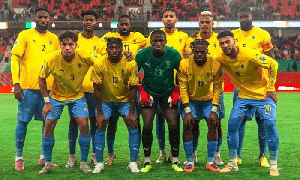The Food and Agriculture Organisation (FAO) is working towards strengthening the resilience of people and their livelihoods by increasing their ability to prevent and mitigate disasters and crises.
Disasters and crises in agriculture are threatening the lives and incomes of an estimated 0.7 billion smallholder farmers who depend mainly on their own production and natural resources.
The FAO, together with its partners, have been pioneering a rural community-based approach, the “Caisses de Re?silience” (CdR), which focuses on engaging and empowering rural smallholders to leverage their existing capacities.
The innovative element of CdR is an integrated community- centered approach, linking social, technical and financial dimensions in a mutually reinforcing way.
The use of sustainable agricultural practices leads to improved productivity, thereby contributing to increased incomes and food or seed reserves.
This improves the capacity of the group members to mobilize their contributions to increase the capital of their group savings and loans (S&L) systems, and also increase the capital of the groups to offer more opportunities to both men and women for diversifying their investments and increasing savings, which is key for resilience building.
Some groups imposed themselves the need to apply good practices in agriculture and nutrition and gain access to the loans, in order to create a virtuous circle for longer term impact even beyond the project duration.
Organizing smallholder farmers into groups creates a dynamic of inclusion, allows trust-building and fosters commitment and dialogue among members facing similar challenges, opportunities and useful experiences.
The project has a facility for each group to prioritize key social aspects they would like to reinforce depending on the context they are living in.
In Sahelian communities, nutrition is considered as one of the most important social aspect that can be addressed through the group dynamics for nutrition surveillance.
The groups may also play a critical role in social integration of most vulnerable individuals facilitating access to basic social services and opportunities, such as the S&L scheme.
In certain circumstances like after the Ebola crisis, or with displaced communities resettling, the project will also consider a conditional cash transfer mechanism which will both facilitate the construction of social or productive infrastructure and generate incomes for these communities to cover basic needs.
Adaptation to various contexts
The CdR approach has been implemented in Uganda and Honduras with over 4,000 groups in each country; and outcomes have demonstrated strengthened resilience of poor rural households with results including increased sustainable production, diversification of livelihoods, reduced malnutrition and women’s empowerment.
Several FAO country offices across the Sahel and elsewhere are currently implementing or exploring ways to integrate CdR in their ongoing portfolio of programmes.
Country expectations
In the Sahel region, collaboration with UN and NGO partners will facilitate the implementation of such an integrated approach whereby one agency is supporting nutrition training, the other one for food and agriculture production to be linked with the reinforcement of the ‘tontines’ which is also a savings and loans mechanism.
One can imagine that cash for work approach is used for restoration in the great green wall region and the cash earned is used for income generating activities through the savings and loans systems for longer term local economy growth.
These activities form an excellent basis for the CdR approach when complemented with social interventions on nutrition sensitive agriculture and social protection to include the very poor.
The Central African Republic has mobilized funding for similar activities, targeting specifically women’s groups, focusing on contractual seed production activities to boost the initial capital of the S&L and to restore their livelihoods.
In Liberia, because of the quarantine measure, women groups have seen their S&L schemes depleted.
FAO decided to contribute to the Ebola awareness campaign by contracting these women groups for sensitizing neighboring communities and the women used the money earned to recapitalize their S&L.
This approach calls for and facilitates partnerships with governments and donors initiatives like the Great Green Wall or the Alliance Globale for the Resilience Initiative (AGIR), and also with non-governmental organization for advocacy and field implementation.
Prerequisites for successful implementation
While CdR remains highly flexible and adaptable to multiple contexts, it requires a certain awareness and commitment of FAO management and staff to the implementation of such an integrated approach.
Country offices can establish partnerships with institutions that have the complementary expertise to ensure that at least two or three dimensions can be well articulated.
Alexis Bonte, Regional Emergency and Rehabilitation Co-coordinator, Africa Regional Office of the FAO
Opinions of Wednesday, 23 December 2015
Columnist: Alexis Bonte and Samuel Bruce Nyarko
FAO strengthens resilience of subsistence farmers
Entertainment













